International Journal of Scientific & Engineering Research, Volume 5, Issue 7, July-2014 595
ISSN 2229-5518
DRIFTING EFFECT OF ELECTRONS ON THE FORMATION OF ION-ACOUSTIC SOLITONS IN A PLASMA WITH NEGATIVE IONS
R. Das
Department of Mathematics, Arya Vidyapeeth College, Guwahati –781016, Assam, India
Abstract— Theoretical investigation of the propagation of ion acoustic solitons in a collisionless plasma consisting of positive ions, negative ions and electrons under the drifting effect of electrons is carried out. Both compressive and rarefactive ion-acoustic solitons for slow mode and only compressive ion-acoustic solitons for fast mode are found to exist depending on the drift velocity ve′ of electrons for
different values of Q′ ( = m j / mi, negative to positive ion mass ratio) > 1 .
Keywords— Drifting velocity, Ion-acoustic, Soliton, KdV, Negative ions, Solitary wave, Compressive and rearefactive.
1 INTRODUCTION
HE propagation of ion-acoustic solitary waves have been studied by many researchers both theoretically and exper- imentally. Washimi and Taniuti [1] were the first to study
the propagation of ion-acoustic solitary waves in a cold plas- ma. Karpman and Kadmtsev [2] have discussed the two effects of nonlinearity and dispersion that give rise to the solitary waves in plasma. On the other hand, total nonlinearity of these waves were taken into account by Sagdeev [3] in his derivation of energy integral instead of the perturbative technique to study solitary waves. Ikezi et al.[4] have first experimentally discovered ion-acoustic solitons and double layers in plasma. But in most of the investigations, the finite electron inertia is neglected leading to the Boltzmann equation for isothermal electrons or non-isothermal electrons. However, the characters of solitons are found to be substantially changed with the in- troduction of the complete fluid equation for the electrons with initial drift motion rather than the simple Boltzmann dis- tribution. Leven and Steinmann [5], Kalita et al. [6], Kalita and Devi [7], Kalita and Das [8] and Kalita and Das [9] have stud- ied ion-acoustic solitary waves with the assumption of drift motion of the electrons in a simple composite plasma. In pres- ence of electron inertia, Das [10] has investigated the effect of ion temperature on small amplitude ion acoustic solitons in a magnetized ion-beam plasma. Very recently Das and Karmak- ar [11] have studied the formation of dust ion acoustic solitons in a plasma with the electrons' drift velocity through the modi- fied Korteweg – de Vries (mKdV) equation.
The role of negative ions, whose presence cannot be ig- nored, in the formation of ion-acoustic solitons in a plasma is another important topic. The existence of ion-acoustic solitons
electrons. Tajiri and Toda [20] predicts by pseudo potential method that solitary waves of large amplitude even can exist in a multi-component plasma with negative ions.
The experimental works in the laboratory with appreciable percentage of negative ions was started by Geoller et al.[21]. Ludwig et al. [22], Nakamura et al. [23] have observed the rar- efactive solitons with small amplitudes in a plasma with a sig- nificant percentage of negative ions. The modified KdV soliton has been experimentally observed by Nakamura and Tsu- kabayashi [24] and Nakamura [25]. Further, Nakamura [26] has observed experimentally in a multicomponent plasma with negative ions of finite ion temperature that the minimum amplitude for a positive pulse to become solitary waves is measured as a function of the density of negative ions.
The present paper deals with the propagation of ion acoustic solitary waves in a plasma consisting of positive ions with negative ions together with the drift motion of the electrons in one dimension. To study the propagation of ion acoustic soli- tary waves in multispecies plasma we have used perturbation method. The organization of the paper is as follows. In Sec. 2 the basic equations for propagation of ion acoustic waves in an unmagnetized plasma system. In Sec. 3 derivation of KdV equation and solitary wave solution and Section 4 is kept for results and discussion.
2 BASIC EQUATIONS
We consider a one dimensional collisionless plasma consist- ing of both positive and negative ions, together with the usual electrons as follows:
in presence of negative ions in a plasma has been discussed by
∂ni + ∂ (n v ) = 0
(1)
Das [12], Watanabe [13], Verheest [14], Baboolal et al. [15],


∂t ∂t i i
Kalita and Kalita [16], Kalita and Devi [7], Kalita and Das [8],

∂vi

∂vi
∂φ

(2)
Kalita and Das [9] and Kalita and Barman [17]. Tagare [18] has
investigated the modified KdV soliton for isothermal electrons
∂t + vi ∂x + ∂x = 0
with warm positive and negative ions whereas Tagare and


∂ne + ∂ (n v ) = 0
(3)
Reddy [19] have considered the same problem for non-thermal
∂t ∂x
IJSER © 2014 http://www.ijser.org
International Journal of Scientific & Engineering Research, Volume 5, Issue 7, July-2014 596
ISSN 2229-5518
∂

+ ve
∂

ve
1 ∂φ 1



∂n
(4)
vi = ε vi1 + ε 2vi2 + ...
(9)
∂t
∂x
Q ∂x
ne ∂x
v j = ε v j1 + ε 2v j2 +
...
∂n j + ∂ (n v ) = 0
(5)


∂t ∂x j j
v = v′ + ε v
+ ε 2v
+ ...
∂vi + v ∂vi
1 ∂φ
(6)
e e e1 e2



∂t i ∂x = Q′ ∂x
Again for charge imbalances these equations are to be com- bined by the Poisson equation
∂2φ
φ = ε φ1 + ε 2φ2 + ...
With the use of of the transformation (8) and the expansion (9) in the normalized set of equations (1) – (7), we get the ex- pression for the phase velocity and the KdV equation as fol- lows-

∂x2 = ne − ni + n j
(7)
1

1 − Q(U − v′ )2
r + Q′

= U 2Q′(1 − r ) ,

r = nd 0
(10)
where, i, j and e stand for positive ion, negative ion and elec-
e ni0

This gives
2
tron respectively ,

Q = me
mi
( = electron to ion mass ratio),
U = − b ±
b − 4ac
2a
m j

Q′ = (= negative to positive ion mass ratio).
mi
where a = {(1 − r )Q′ + Q(r + Q′)}
b = −(r + Q′)Qve′
c = (r + Q′)(Qv′2 − 1)
We have normalized densities ni , n j
and ne
by the unper-
and
3
turbed densities ne0 , time t by the inverse of the characteristic
∂φ1 + pφ ∂φ1 + q ∂ φ1 = 0
(11)
ion plasma frequency i.e., ω pi =
1

2
i , distance x by the



∂t 1 ∂x
A
∂x 3
1

4p n 0e
where


p = and q =
i
1
2B
3ni0
2B
3Q(U − ve′ )2 − 1

3n j0
electron Debye length λDe =
kbTe

2
2 , velocities by the ion-
with A =

U 4 +

3 −
1 − Q U − v′
Q′2U 4

4p n 0e e
i
1

k T 2

kbTe

and B = ni0 +
U 2
QU (U − ve′ )

{1 − Q(U − v′ )2}2

+ n j0
Q′U 2
acoustic speed
Cs =

b e
, and the potential φ by
; kb e
mi
is the Boltzmann constant.
e It is observed that the nonlinear ion-acoustic solitons, in
1

this model of plasma, exist when U − ve′
− ve′  ≠ .
≠ .
Q
By using the transformation η = x − Vt
(V is the velocity
3 DERIVATION OF KORTEWEG-DE VRIES EQUATION AND ITS
SOLUTION
with which the solitary waves travel to the right), the solution of the KdV equation (11) can be obtained as
To derive the KdV equation from the set of equations (1) to
3V

2 1 V
(7), we use the stretched variables
φ1 =
sec h η
p 2 q
1

x = ε 2 (x − Ut),
3

t = ε 2Ut
1

∂ ∂ ∂
1

∂ ∂
(8)
3V

where φ0 =
p

is the amplitude and ∆ = 2
q
is the width of
V
such that

≡ ε 2 ,
∂x ∂x

≡ ε 2U ε
∂t


−
∂t ∂x
the ion-acoustic soliton.
with phase velocity U of the wave and the following ex- pansions of the flow variables in terms of the smallness parameter ε :
ni = ni0 + ε ni1 + ε 2ni2 + ...
4 RESULTS AND DISCUSSION
In presence of negative ions under the drifting effect of the electrons in this model of plasma, both fast and slow modes are found to exist for Q′ > 1 subject to the sound mathematical

(1 − r )Q′ + Q(r + Q′)
n j = n j0 + ε n j1 + ε 2n j2 + ...
condition
ve′ ≤
(1 − r )QQ′
. In this multi-component
ne = 1 + ε ne1 + ε 2ne2 + ...
plasma, both compressive and rarefactive ion-acoustic solitons for slow mode and only compressive ion-acoustic solitons for
IJSER © 2014 http://www.ijser.org
International Journal of Scientific & Engineering Research, Volume 5, Issue 7, July-2014 597
ISSN 2229-5518
fast mode are found to exist with high amplitudes for small ve′ . The variations of phase velocities U for slow and fast ion acoustic solitons are shown in the figure 1. It is evident from figure that phase velocity is influenced both by electrons drift velocity and concentration of negative ions. With the increas- ing ve′ , the phase velocity for fast mode is seen to vary almost parabolically (continuous curves) and for slow mode it is in- creases very sharply (dotted curves) but at the upper regime of
5 FIGURES
ve′ for fixed
r = 0.4
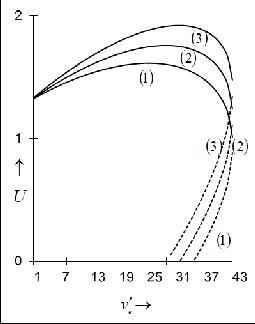
and for different values of
Q′ = 20(1), 25(2), 30(3) . The amplitude [Fig. 2(a)] of the slow
compressive ion-acoustic solitons decreases sharply in the
lower region of
ve′ and slowly in the upper region of
ve′ for
fixed V = 0.30
and
Q′ = 18.5 . The corresponding width [Fig.
2(b)] of slow compressive ion-acoustic solitons decreases con- vexly for the same parametric values. For Q′ > 1 , the ampli- tudes [Fig. 3(a)] of the compressive KdV solitons diminish to
zero at the upper existence region of ve′ for fixed V = 0.10 and
Q′ = 5
for
r = 0.05(1), 0.10(2), 0.15(3), 0.20(4) . But these solitons
were non-existent in the investigation of Kalita and Das [8]. Of
FIG.1. Phase velocity of slow (dotted curve) and fast (continu-
course, these solitons attain high amplitudes at the lower re-
gion of ve′ which are higher for higher r . Noticeably, the am-
ous curve) ion-acoustic solitons versus
ve′ for fixed
r = 0.4
plitudes of the compressive KdV solitons are found to be con- siderably greater for higher values of r in presence of the electrons’ drift motion in contrast to the works (without elec- trons drift motion) of Kalita and Barman [17](figure 1). Inter- estingly, the corresponding widths of KdV solitons with ig- norable difference [Fig. 3(b)] for
r = 0.05(1), 0.10(2), 0.15(3), 0.20(4) sharply and convexly diminish.
On the other hand, the amplitude [Fig. 4(a)] of the fast com- pressive soliton decreases sharply in the lower existence re- gion of Q′ and very slowly in upper existence region of Q′ for
for different values of Q′ = 20(1), 25(2), 30(3) .
fixed
V = 0.10
and
r = 0.05
for different values of
ve′ = 5(1),10(2),15(3) . But corresponding width [Fig. 4(a)] of the
solitons are of constant magnitude. It is to be mentioned that the compressive fast ion-acoustic solitons exists [Fig. 5 (a)] only for higher values of Q′(> 1) and for very small V = 0.002
and its amplitude decreases as Q′ increases. Further they are
found to exist only in upper regime of Q′ for very small V
and for different values of
ve′ = 6(1), 8(2),10(3). On the other
hand, rarefactive fast ion-acoustic solitons exist [Fig. 5 (a)] on-
ly in the lower regime of
Q′(> 1) for the same set of small V .
However, the character of the fast rarefactive solitons changes to fast compressive solitons after certain Q′∗ characterizing an uncountable region. The corresponding widths [Fig. 5(b)] of the fast (compressive and rarefactive) increases very slowly
and linearly for fixed V = 0.002
ues of ve′ = 6(1), 8(2),10(3).
and
r = 0.4 for different val-
IJSER © 2014 http://www.ijser.org
International Journal of Scientific & Engineering Research, Volume 5, Issue 7, July-2014 598
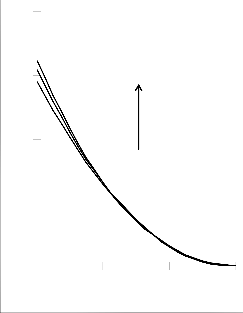
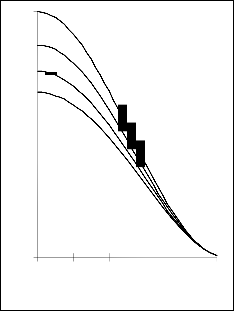
ISSN 2229-5518
0.08
0.06
0.04
↑
0
0.02
0.6(3)
0.4(2)
0.2(1)
(a)
0.5
0.25
↑
φ
(4)
(3) (2)
(1)
(a)
0
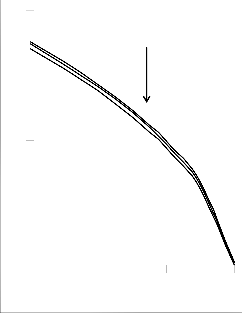
0
1.4
0.7
↑
∆
37 39 41 43
v′ →
(b)
0.2(1)
0.6(3)
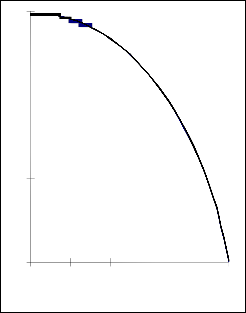
0
4.5
3.5
↑
∆
2.5
(1) (2)
(3)
(4)
v′ →
(b)
0
37 39 41 43
v′ →
1.5
v′ →
FIG.2. Amplitudes (a) and widths (b) of slow compressive ion-
FIG.3. Amplitudes (a) and widths (b) of fast compressive ion-
acoustic solitons versus
ve′ for fixed V = 0.30 and
Q′ = 18.5
acoustic solitons versus
ve′ for fixed V = 0.10
and Q′ = 5
for
for different values of r = 0.2(1), 0.4(2), 0.6(3) .
different values of r = 0.05(1), 0.10(2), 0.15(3), 0.20(4) .
IJSER © 2014 http://www.ijser.org
International Journal of Scientific & Engineering Research, Volume 5, Issue 7, July-2014 599
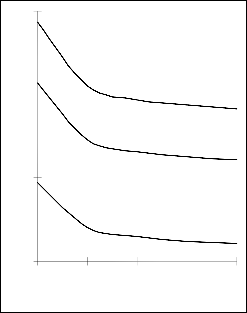
ISSN 2229-5518
0.37
0.33
↑
φ
(1) (2)
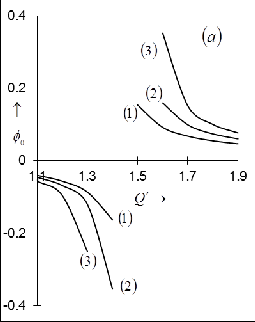
(a)
0
0.29

0.25
4.5
4.4
↑
∆
4.3
(3)
1.5 3.5 5.5 7.5 9.5
Q′ →
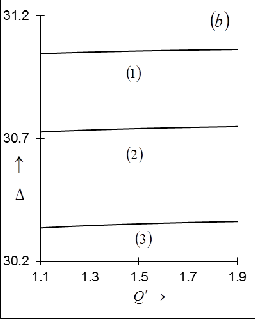
(b)
(1)
(2)
4.2
(3)
1.5 3.5 5.5 7.5 9.5
Q′ →
FIG.4. Amplitudes (a) and widths (b) of fast compressive ion-
FIG.5. Amplitudes (a) and widths (b) of slow compressive
acoustic solitons versus Q′ for fixed V = 0.10
for different values of ve′ = 5(1),10(2),15(3) .
and
r = 0.05
and rarefactive ion-acoustic solitons versus Q′ for fixed
V = 0.002 and r = 0.4 for different values of ve′ = 6(1), 8(2),10(3).
REFERENCES
[1] H. Washimi and T. Taniuti, Propagation of Ion-Acoustic Solitary Waves of Small Amplitude, Phys. Rev. Lett. 17, 996 – 997 (1966).
[2] B. B. Kadomtsev and V. I. Karpman, Nonlin- ear Waves, Sov. Phys. Usp. 14, 40- 60 (1971).
IJSER © 2014 http://www.ijser.org
International Journal of Scientific & Engineering Research, Volume 5, Issue 7, July-2014 600
ISSN 2229-5518
[3] R. Z. Sagdeev, Reviews of Plasma Physics
(Consultants Bureau, New York, 1996), Vol. 3, p.33
[4] H. Ikezi, R. J. Tailor and D. R.
Baker,Formation and Interaction of Ion-Acoustic Solitrons,
Phys. Rev. Lett. 25, 11 – 14 (1970).

[5] R. Leven and W. Steinmann, Drifting electron
effects on strongly non-linear ion-acoustic solitons, Contr.
Plasma Phys. 20, 195 – 199(1980).
[6] B. C. Kalita, M. K. Kalita, and J. Chutia, Drift-
ing effect of electrons on fully non-linear ion acoustic
waves in a magnetoplasma, J.Phys. A Math, Gen. 19, 3559
– 3564 (1986).
[7] B. C. Kalita and N. Devi, Solitary waves in a
warm plasma with negative ions and drifting effect of electrons,
Phys. Fluids B 5(2), 440 – 445 (1993).

[8] B. C. Kalita and R. Das, A comparative study of modified Korteweg–de Vries (MKdV) and Korteweg–de Vries (KdV) solitons in plasmas with negative ions under the influence of electrons’ drift motion, Plasmas 5, 3588 –
3594 (1998).
[9] B. C. Kalita and R. Das, Modified Korteweg
de Vries (MKdV) and Korteweg de Vries (KdV) Solitons in

a Warm Plasma with Negative Ions and Electrons' Drift

Motion J. Phys. Soc. Jpn. 72, 2918-2924 (2002).
[10] R. Das, Effect of ion temperature on small-
amplitude ion acoustic solitons in a magnetized ion-
beam plasma in presence of electron inertia, Astro-
phys. Space Sci. 341, 543 – 549, (2012).
[11] R. Das and K. Karmakar, Modified Korteweg
– de Vries solitons in a dusty plasma with electron inertia
and drifting effect of electrons, Can. J. Phys, 91, 839 – 843
(2013).
[12] G. C. Das, G. C. Das, Ion-acoustic solutions
and shock waves in multicomponent plasmas, Plasma
Phys. 21, 257 – 266 (1979).

[13] S. Watanabe, Ion Acoustic Soliton in Plasma with Negative Ion, J. Phys. Soc. Jpn. 53, 950 – 956 (1984).
[14] F. Verheest,.Ion-acoustic solitons in multi- component plasmas including negative ions at critical densities, J. Plasma Phys. 39, 71 – 79 (1988)
[15] S. Baboolal, R. Bharathram, and M. A. Hell- berg,.Arbitrary-amplitude theory of ion-acoustic solitons in warm multi-fluid plasmas, J. Plasma Phys. 41, 341 -
353(1989)

[16] B. C. Kalita and M. K. Kalita, Modified
Korteweg–deVries solitons in a warm plasma with nega-
tive ions, Phys. Fluids B 2, 674 – 676 (1995).
[17] B. C. Kalita and S. N. Barman, Solitons in a
Warm Unmagnetized Plasma with Electron Inertia and
Negative Ions, J. Phys. Soc. Jpn. 64, 784 – 790 (1995).
[18] S. G. Tagare, Effect of ion temperature on ion-
acoustic solitons in a two-ion warm plasma with adiabatic
positive and negative ions and isothermal electrons, Plas-
ma Phys. 36, 301 – 312 (1986).
[19] S. G. Tagare and R. V. Reddy, Effect of ionic
temperature on ion-acoustic solitons in a two-ion warm
plasma consisting of negative ions and non-isothermal
electrons, Plasma Phys. Controlled Fusion 29, 671 –
676(1987).
[20] M. Tajiri and M. Toda, On Large Amplitude
Ion Acoustic Solitons in Plasma with Negative Ions, J.
Phys. Soc. Jpn. 54, 19 – 22 (1985).

[21] S. Von. Goeller et al., Production of a Ther-
mally Ionized Plasma with Negative Ions J. Appl. Phys.
37, 2519 (1966).
[22] G. O. Ludwig, J. L. Ferreira, and Y. Nakamu-
ra, Observation of Ion-Acoustic Rarefaction Solitons in a
Multicomponent Plasma with Negative ions, Phys. Rev.
Lett. 52, 275 (1984).
[23] Y. Nakamura, L. Ferreira and G. O. Ludwig,
Experiments on ion-acoustic rarefactive solitons in a mul-
ti-component plasma with negative ions, J. Plasma Phys.
33, 237 - 248 (1985a).
[24] Y. Nakamura and I. Tsukabayashi, Modified
Korteweg—de Vries ion-acoustic solitons in a plasma, J.
Plasma Phys. 34, 401 – 415 (1985).
[25] Y. Nakamura, Nonlinear and Environmental
Electromagnetics, ed. H. Kikuchi (Elsevier)p. 401 (1985).
[26] Y. Nakamura, Observation of large-
amplitude ion acoustic solitary waves in a plasma, J.
Plasma Phys. 38, 461 – 471 (1987).
IJSER © 2014 http://www.ijser.org









